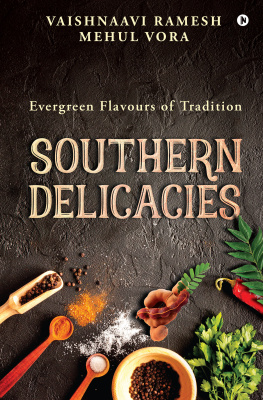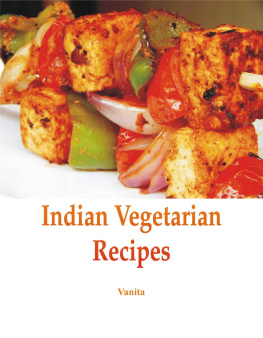
 Notion Press No. 8, 3 rd Cross Street, CIT Colony, Mylapore, Chennai, Tamil Nadu 600 004 First Published by Notion Press 2020 Copyright Vaishnaavi Ramesh, Mehul Vora 2020 All Rights Reserved. eISBN 978-1-64951-680-0 This book has been published with all efforts taken to make the material error-free after the consent of the author. However, the author and the publisher do not assume and hereby disclaim any liability to any party for any loss, damage, or disruption caused by errors or omissions, whether such errors or omissions result from negligence, accident, or any other cause. While every effort has been made to avoid any mistake or omission, this publication is being sold on the condition and understanding that neither the author nor the publishers or printers would be liable in any manner to any person by reason of any mistake or omission in this publication or for any action taken or omitted to be taken or advice rendered or accepted on the basis of this work. For any defect in printing or binding the publishers will be liable only to replace the defective copy by another copy of this work then available.
Notion Press No. 8, 3 rd Cross Street, CIT Colony, Mylapore, Chennai, Tamil Nadu 600 004 First Published by Notion Press 2020 Copyright Vaishnaavi Ramesh, Mehul Vora 2020 All Rights Reserved. eISBN 978-1-64951-680-0 This book has been published with all efforts taken to make the material error-free after the consent of the author. However, the author and the publisher do not assume and hereby disclaim any liability to any party for any loss, damage, or disruption caused by errors or omissions, whether such errors or omissions result from negligence, accident, or any other cause. While every effort has been made to avoid any mistake or omission, this publication is being sold on the condition and understanding that neither the author nor the publishers or printers would be liable in any manner to any person by reason of any mistake or omission in this publication or for any action taken or omitted to be taken or advice rendered or accepted on the basis of this work. For any defect in printing or binding the publishers will be liable only to replace the defective copy by another copy of this work then available.
Foreword I take great pleasure in introducing VAISHNAAVI RAMESH and MEHUL VORA in their role as author of their new book Titled SOUTHERN DELICACIES this is their first book. This book is an important aid for anybody aspiring to be knowledgeable about the subtle art of South Indian Delicacies, written in a very easy narrative. This book will help all the housewives get important knowledge of south Indian recipes. Every page reflects simple length and breadth of the authors expertise in the field of cooking. Surely a must read for all. Chef K. Chef K.
Damodaran Celebrity Chef Cantact Number: 9444449656 Introduction Indian diet is a holistic one. It embraces all the parameters of taste (rasa), after-taste (vipaka), guna (hot/cold, heavy/light) from each and every ingredient used. Indian cooking is a science in itself. Food is an important part of the southern culture playing a role in every day life as well as in festivals. The South Indian Thali offers all six different flavors of sweet, salt, bitter, astringent, spicy in a single plate. Our Indian meals follow this custom in a perfect balance.
The meals are served in Banana leaves and eaten with hands. The meals served on banana leaf adds to the Vitamins, have antioxidant properties, as well as antibacterial properties. Besides the leaf is completely biodegradable. The meals consist of rice, which is the staple food of the South. It is topped with flavorings or plain melted ghee. Sambar, vegetables and curry are added separately for rice.
Poriyal (seasoned vegetable), Paccahdi (salad or raitha), Thuvayal (chutneys), Vathal (dried and preserved vegetables) followed by Rasam, Payasam and curd and the mouth watering pickle are served next. Curd is important as it cools the system and Rasam is made for its digestive properties. Rasam, which is a staple food in households of the southern states of India, can be called as Indias answer to soups! The colonial British adapted it as the pungent Mulligatawny soup. Rasam is a thin extract of a pulse called as Tuvar dal, spiced with various ingredients: pepper, tomatoes, tamarind, ginger when added with the Indian seasoning makes for a delicious soup. It is easy to digest and also can be your homemade medicine that can aid in relieving cold, cough etc. Sambar, another regular dish from the southern states, is a thick extract of tuvar dal, containing vegetables of your choice.
It is served as an accompaniment to hot rice or the Indian version of dumplings that are doughnut shaped the Medhu Vadas or also served with the now world famous Idlis. In Kannada, it is called huli and in Telugu, pulusu. Each ingredient lends its unique properties to enhance the taste of these, what we can call Indian versions of soup. Tamarind, which adds the sweet and tangy taste to the dish, is one such important fruit added to most recipes in this book. Tamarind has been grown in India since prehistoric times. In AD 1298 Marcopolo called Tamarind as the date fruit of India.
In Hindi it is called Imli and in Tamil it is called Puli. Tamarind later became the word used for tartness. It has been extensively mentioned in Tamil literature and Manasollasa too. Pepper, an important spice in Indian cuisine, is called Maricha in Sanskrit and Milagu in Tamil. Pepper finds its mention in great Sanskrit literary works such as Apasthamba Dharma Sutra, Arthashastra, Pali Mahavagga, Manasollasa, and Mahabharatha. It is grown in what was then called the Cheran kingdom, present day Kerala.
It has always been an important ingredient from a health point-of-view. It increases the metabolic rate, improves blood circulation, and is a handy spice that can be readily used for treating coughs and colds. Tuvar dal is an important pulse of India. It is cited in Tamil literature, Buddhist literature and by Charaka who compiled the vast and comprehensive Charaka Samhita the book on Ayurvedic medicines. Tuvar dal is the main content of Sambars and almost all Rasams. Garlic is believed to possess five of the six rasas or tastes, of Ayurveda.
It is versatile in aligning humor imbalances. Ghee has always been regarded as a very vital constituent in Indian homes. It is not only used in cooking but also is important in various cultural rituals. Ghee has immense medicinal value, it gives strength and helps digestion. Ghee improves memory and the intellect. Another regular spice, Cumin, is mentioned in India only after 300 BC.
It is considered to be helpful in digestion. Curd has been prepared in every household in India for many millennia. Curd contains living microflora, a probiotic that improves the gut health, and helps in warding off infection. Curry leaves also called Karivepillai in Tamil, are used to impart a distinctive flavour to the dish. Curry leaves are packed with carbohydrates, fiber, calcium, phosphorus, irons, vitamins A, C, B and E. Curry leaves help your heart function better, fights infections and can enliven your hair and skin with vitality.
It keeps anemia at bay. Coconut is another important ingredient which is used to make a variety of dishes. It is rich in short and medium chain fatty acids. Lauric acid the major component of coconut has been recognized for its antibacterial, antiviral and antiprotozoal functions. Indian spices with all their goodness and their power-packed properties are our in-house go-to doctors! All these spices have been recently touted as immunity builders. Lets enjoy our very own traditional foods.
While these dishes assist in enhancing our immunity, we can, at the same time, contribute to preserving our age-old traditions. So lets get on to trying our hands at these simple, yet super foods when it comes to both taste and nutrition. Rasams Rasam is one of the most versatile of Indian dishes. It can be served as an appetizer, over rice, to soothe a sore throat or as a soup. It is a comfort food for many South Indians. The fragrant and aromatic spices that are used along with tomatoes and tamarind for tartness is simply drool worthy.
Soups form a wholesome meal and if we look across the globe, most cultures have their own unique receipes for soups. Rasam which is a staple food for most South Indians can be called as Indias answer to Soups! The colonial British adapted it as the pungent Mulligatawny soup. It is called as charu in Andhra, rasam in Tamilnadu and Kerala and sarru in Karnataka. Whatever the name is, it is simply delicious. It can be had thick or thin. The thickness here comes from tuvar dal and not cornflour as used in regular soups.
The tartness/tanginess does not come from tamarind alone. It is so versatile that tamarind can be replaced by Lemons, Tomatoes and Kokum. It is still a veritable treasure house of nutrients. The classic Lemon Rasam with moong dal, pepper, cumin and curry leaves is to go for during cold and coughs, and the Pepper and Garlic Rasam when one has digestion problems. Not only these ingredients, rasam can be made from betel leaves, coconut milk and beetroot too. There is no doubt it is a veritable treasure house of nutrients.
Next page










 Notion Press No. 8, 3 rd Cross Street, CIT Colony, Mylapore, Chennai, Tamil Nadu 600 004 First Published by Notion Press 2020 Copyright Vaishnaavi Ramesh, Mehul Vora 2020 All Rights Reserved. eISBN 978-1-64951-680-0 This book has been published with all efforts taken to make the material error-free after the consent of the author. However, the author and the publisher do not assume and hereby disclaim any liability to any party for any loss, damage, or disruption caused by errors or omissions, whether such errors or omissions result from negligence, accident, or any other cause. While every effort has been made to avoid any mistake or omission, this publication is being sold on the condition and understanding that neither the author nor the publishers or printers would be liable in any manner to any person by reason of any mistake or omission in this publication or for any action taken or omitted to be taken or advice rendered or accepted on the basis of this work. For any defect in printing or binding the publishers will be liable only to replace the defective copy by another copy of this work then available.
Notion Press No. 8, 3 rd Cross Street, CIT Colony, Mylapore, Chennai, Tamil Nadu 600 004 First Published by Notion Press 2020 Copyright Vaishnaavi Ramesh, Mehul Vora 2020 All Rights Reserved. eISBN 978-1-64951-680-0 This book has been published with all efforts taken to make the material error-free after the consent of the author. However, the author and the publisher do not assume and hereby disclaim any liability to any party for any loss, damage, or disruption caused by errors or omissions, whether such errors or omissions result from negligence, accident, or any other cause. While every effort has been made to avoid any mistake or omission, this publication is being sold on the condition and understanding that neither the author nor the publishers or printers would be liable in any manner to any person by reason of any mistake or omission in this publication or for any action taken or omitted to be taken or advice rendered or accepted on the basis of this work. For any defect in printing or binding the publishers will be liable only to replace the defective copy by another copy of this work then available.